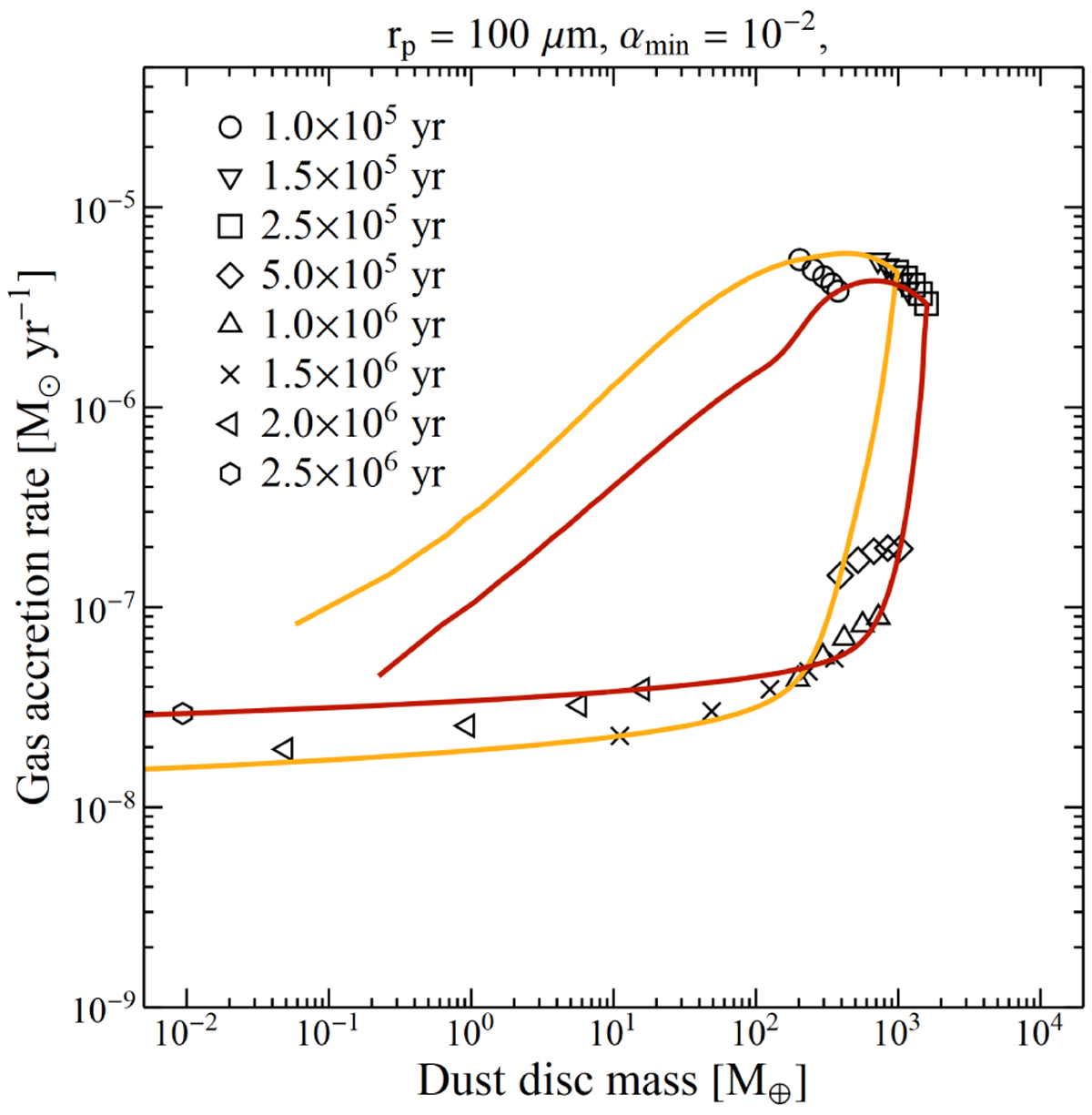Fig. 3

Stellar gas accretion rate and dust disc mass as a function of time, for discs with final centrifugal radii of 8, 16, 32, 64, and 128 au forming from 1 M⊙ cloud cores. The red and yellow lines show the tracks of the two cases with the highest and lowest final centrifugal radius, respectively. The formation phase ends at t ≈ 1.8 × 105 yr. During the formation phase a trend can be seen where systems with smaller centrifugal radii have lower dust disc masses and slightly higher gas accretion rates. Between 1.8 × 105 yr and 5.0 × 105 yr the gas accretion rates drop significantly, while dust disc masses decrease only slightly. Discs with a smaller final centrifugal radius experience a larger drop in accretion rate. A lower final centrifugal radius leads to faster evolution of the protoplanetary disc. At 2.5 × 106 yr, only the case with the highest final centrifugal radius remains, but the dust disc mass is only ≈ 10−2 M⊕.
Current usage metrics show cumulative count of Article Views (full-text article views including HTML views, PDF and ePub downloads, according to the available data) and Abstracts Views on Vision4Press platform.
Data correspond to usage on the plateform after 2015. The current usage metrics is available 48-96 hours after online publication and is updated daily on week days.
Initial download of the metrics may take a while.


